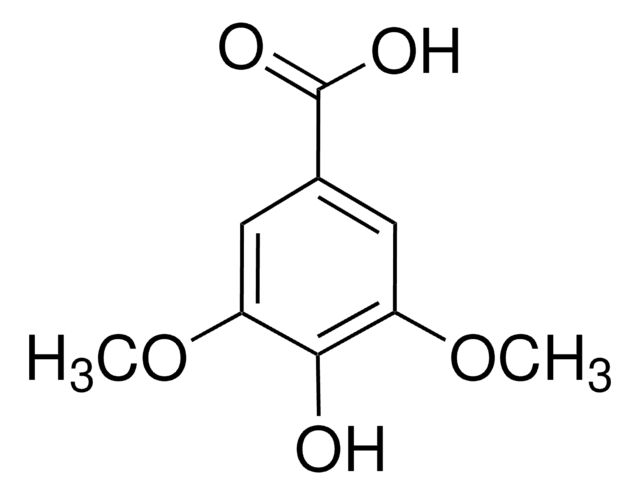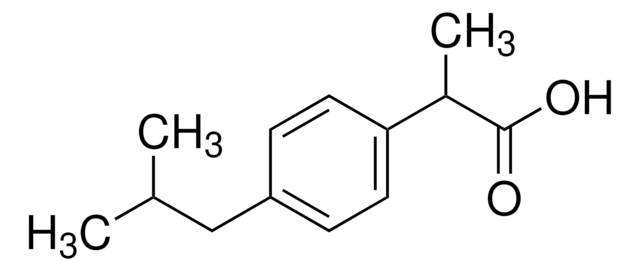55264
Ibuprofen-d3
analytical standard
Sinonimo/i:
α-Methyl-d3-4-(isobutyl)phenylacetic acid
About This Item
Prodotti consigliati
Grado
analytical standard
Livello qualitativo
Purezza isotopica
95 atom % D
Saggio
≥98.0% (HPLC)
Durata
limited shelf life, expiry date on the label
tecniche
HPLC: suitable
gas chromatography (GC): suitable
applicazioni
environmental
forensics and toxicology
pharmaceutical (small molecule)
Formato
neat
Spostamento di massa
M+3
Stringa SMILE
[2H]C([2H])([2H])C(C(O)=O)c1ccc(CC(C)C)cc1
InChI
1S/C13H18O2/c1-9(2)8-11-4-6-12(7-5-11)10(3)13(14)15/h4-7,9-10H,8H2,1-3H3,(H,14,15)/i3D3
HEFNNWSXXWATRW-HPRDVNIFSA-N
Descrizione generale
Applicazioni
Confezionamento
Applicazioni
Avvertenze
Warning
Indicazioni di pericolo
Consigli di prudenza
Classi di pericolo
Acute Tox. 4 Oral - Eye Irrit. 2 - STOT SE 3
Organi bersaglio
Respiratory system
Codice della classe di stoccaggio
11 - Combustible Solids
Classe di pericolosità dell'acqua (WGK)
WGK 1
Punto d’infiammabilità (°F)
Not applicable
Punto d’infiammabilità (°C)
Not applicable
Dispositivi di protezione individuale
dust mask type N95 (US), Eyeshields, Gloves
Scegli una delle versioni più recenti:
Possiedi già questo prodotto?
I documenti relativi ai prodotti acquistati recentemente sono disponibili nell’Archivio dei documenti.
I clienti hanno visto anche
Il team dei nostri ricercatori vanta grande esperienza in tutte le aree della ricerca quali Life Science, scienza dei materiali, sintesi chimica, cromatografia, discipline analitiche, ecc..
Contatta l'Assistenza Tecnica.

